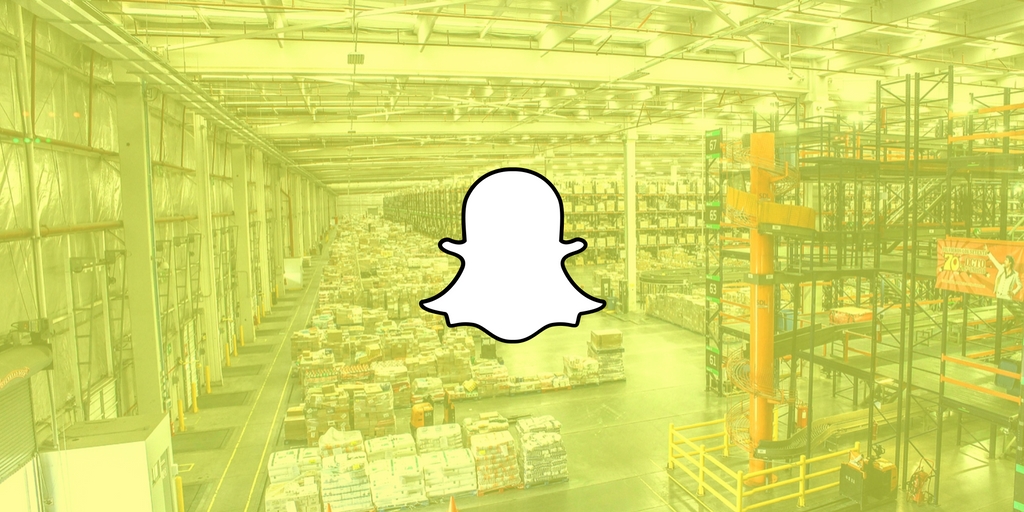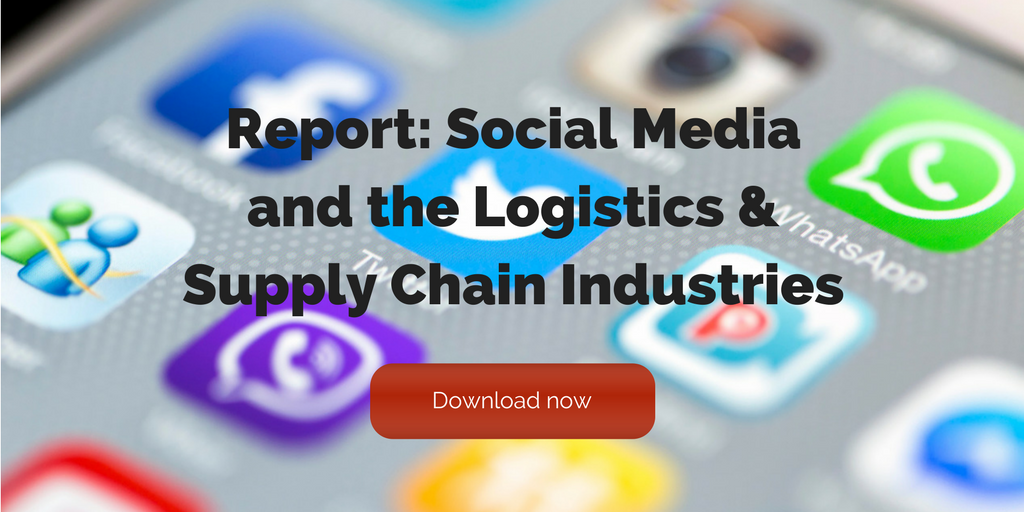
by Fronetics | Oct 6, 2016 | Blog, Content Marketing, Logistics, Marketing, Social Media, Supply Chain
What is influencer marketing and how can supply chain companies use it to win over customers?
All eyes were on Peyton Manning following the Denver Broncos’ win over the Carolina Panthers in Super Bowl 50. Would he use this weighty moment to announce his much-anticipated retirement? The nation was a captive audience when a reporter asked him about plans for his future.
“I’m going to drink a lot of Budweiser tonight, Tracy. I promise you that,” replied Manning. He again mentioned the beer brand by name moments later on the winner’s podium.
Budweiser was quick to assure the Twittersphere that the company had not paid Manning for his endorsement but were “delighted” that he had. I’m sure that was an understatement, given Manning’s two (free) casual mentions were valued at about $13.9 million. The now-retired quarterback just likes a good Bud Light — and that’s very good for the Budweiser brand.
This moment illustrates the power of influencer marketing. When celebrities or other popular figures become brand advocates, customers quickly follow. The potential bottom-line impact has both B2C and B2B companies thinking through how they can leverage influencer marketing in their promotional efforts. In fact, it was identified as one of the next big trends in content marketing for 2017.
What is influencer marketing?
Forbes describes influencer marketing as “a non-promotional approach to marketing in which brands focus their efforts on opinion leaders, as opposed to direct target market touchpoints.” Basically, highly visible people become brand advocates by employing your products or services in their everyday lives. There are two types: earned and paid.
Earned influencers
Earned influencers, like Manning to Budweiser, use a company’s product regularly because they like it. The most obvious examples come from the sports and entertainment sector: Marshawn Lynch and Skittles; country duo Florida Georgia Line and Fireball Whiskey; Oprah and everything on her annual Favorite Things list.
Paid influencers
Paid influencers receive compensation for using certain brands. Popular bloggers and social media users, specifically those targeting the growing millennial and mom demographics, are the most prevalent example. In fact, a number of sites — like BrandBacker and Tapinfluence — now exist to help connect brands with social influencers.
How supply chain marketers can leverage influencer marketing
Peer recommendations are increasingly important to the B2B buyers’ purchase process. In fact, nearly half listed their peers and colleagues as a top source of information when evaluating vendors, according to Demand Gen’s most recent B2B buyers survey. This sets the stage for organizations to leverage influencer marketing as a strategic tool to gain new business.
While celebrity endorsements probably aren’t feasible for the supply chain, that doesn’t mean influencer marketing is out of the question. In fact, your company likely has a number of natural brand advocates at your fingertips. Here are a few examples.
1) Your social media followers
Social media has played a prominent role in the rise of influencer marketing because it “enables peer recommendations to play a much greater role in purchasing decisions,” according to Forbes contributor Kyle Wong. So your company’s social platforms are a natural place to begin any influencer marketing campaign. As a start, check your Twitter Analytics dashboard to see who your top follower is this month.
2) Your customers
Happy customers are your best influencers. When customers discuss their experiences with brands on social media, as is the norm these days, their entire networks see this interaction. And review sites are becoming an increasingly popular research tool for B2B buyers. Offering superior service to your customers can prompt them to praise your company on these platforms — not to mention, recommend your business to their peers and colleagues offline.
3) Industry experts and analysts
Who do your buyers turn to for information and opinions about what is happening in the current marketplace? More than this, who are up-and-coming thought leaders in the space?
4) Journalists and bloggers
Having an industry publication drop your company’s name is any marketer’s dream. Engaging in thoughtful discussion with the writers and editors behind that media — either online or at industry events — can be the beginning of a professional relationship that leads to brand advocacy.
Related posts:

by Fronetics | Oct 5, 2016 | Blog, Content Marketing, Logistics, Marketing, Social Media, Strategy, Supply Chain
It’s time to stop ignoring Snapchat — now Snap Inc. — and start thinking about how to use it in B2B marketing.
You may know Snapchat because your kids use it obsessively. You may still think of it as the “sexting app.” Whatever your thoughts, it’s time to stop thinking it will never be relevant to you and your business.
Founder of the Content Marketing Institute Joe Pulizzi named Snapchat one of the next big trends in content marketing for 2017. He sites the platform’s impressive growth as one reason to pay attention.
Snapchat becomes Snap Inc.
In fact, it’s becoming one of the most popular social media networks available: Snapchat reached 10 billion daily video views, passing Facebook in April 2016, and overtook Twitter in daily usage in June 2016, with an estimated 150 million daily active users.
Celebrities, B2C organizations, and even the White House have jumped on board. Everyone is eager to reach the 41% of American 18 to 34 year olds that Snapchat’s ad division claims are using the platform on a given day.
Snapchat’s success has prompted the company to expand and diversify. In September, it launched a new line of business, video-enabled sunglasses (called Spectacles), and rebranded with a new corporate name, Snap Inc. CEO Evan Spiegel hinted at even more to come in a blog post: “Now that we are developing other products, like Spectacles, we need a name that goes beyond just one product.”
What’s next for the self-proclaimed “camera company” is a mystery, but one thing is for sure: B2B companies should be paying attention.
Behind every B is a C
Gary Vaynerchuk, CEO of Vayner Media, makes a convincing argument in his article Why Snapchat Will Be Great for B2B Companies. He recognizes a pattern among social networks that signals the rise of Snapchat in the B2B space:
“These platforms start off young, start off consumer based, start in a niche, and then go mainstream. It baffles me that people don’t understand that when an app hits 100 million active users, it’s gone mainstream. And what does that mean? It means that the platform can start to mature and start getting deeper into the business world. That’s because once you have the attention of the 35- to 65-year-old world, you now have the potential to cross over into the B2B world.”
Vaynerchuk is also quick to note that “behind every B is a C,” meaning there is a human behind every business making a decision. If a company is able to reach that human with relevant content on the user’s preferred platform, that’s a win.
Perhaps it’s early to start pouring major resources into Snapchat. But Vaynerchuk predicts that it has enormous potential for B2B organizations as early as 2018:
“Snapchat will be an excellent place for B2B players who act like media companies — media companies that create stories to bring value to their end users. Those players will find their niche and their audience, allowing them to disproportionately pick up business. Meanwhile, their competitors will still be debating the ROI of Snapchat. And they’ll be left behind if they can’t adapt and evolve with the evolution of these platforms.”
How could your company use brief video storytelling to bring value to your customers? It’s time to start the wheels turning.
Related posts:


by Fronetics | Sep 26, 2016 | Blog, Strategy, Talent
What do people find when they google your name? Branding yourself can help sway their first impression.
Face it: Potential employers, customers, and other associates have likely searched your name on the internet before they meet you in person. What do they see?
Your LinkedIn and Facebook pages, Twitter and Instagram accounts, personal blog, and even your pins on Pinterest are all subject to public scrutiny. The sum of those findings is your brand image, what you put forth to the world to define who you are and what you are about.
The reality is that when you walk into a job interview, client meeting, or other engagement, you are likely being evaluated against the first impression the person made prior to your arrival through an internet search. Shouldn’t you think carefully about your brand and how you want people to perceive you?
To be successful, you need to take steps to build and enhance your brand. Here are four steps to branding yourself.
1) Define your brand
A brand is a story. What is your story? Take the time to sit down and look at where you have been and where you are. Where you want to be? What is your skill set? What experiences do you have? How are you unique? Take all of this information and knowledge and define your brand — tell your story. Be clear, be concise, and be direct. If you can’t define your brand in a sentence or two, you have lost an opportunity.
2. Take stock
What information is “out there?” Start by making a list of all the social media accounts you have, even if you no longer actively use them. Next, Google yourself. What do you find? As G.I. Joe says, “Knowing is half the battle.”
3. Define a strategy
At this point you have a brand and you know what information about your brand is publicly available. Is the information enhancing or hurting your brand? What steps can you take to strengthen your brand? For example, should you adjust your privacy settings on some of your accounts so that personal information and exploits are not available for all to see? Does your LinkedIn page need to be updated? If you don’t take the time to define your strategy, you will not be able to execute it effectively.
4. Take action
Frank Cavallaro wrote, “Strategy is about making choices. Execution is about getting down and dirty so that those choices can produce results.” Don’t stop at creating the strategy — execute. And remember, the internet is not static. What information about you gets added over time? Furthermore, it is important to periodically look at your brand. Is it still representative of where are and where you want to be? If not, take the time to re-brand yourself.
When you take the time to brand yourself, you have the opportunity to define that first impression.
Related posts:

by Fronetics | Sep 22, 2016 | Blog, Content Marketing, Logistics, Marketing, Supply Chain
Companies in the supply chain and logistics industries should take note of these 19 content marketing trends.
Joe Pulizzi of the Content Marketing Institute recently revealed his predictions for the biggest trends in content marketing for 2017. As the leader of CMI, Pulizzi dedicates much of his time discussing where content marketing is heading with enterprise marketers around the world.
Since 88% of B2B marketers use content marketing as a part of their marketing programs, you’ll likely see some of these trends and issues arising among your competitors, your clients, and, ideally, your company in the near future. As you start to strategize for next year and beyond, be sure to consider these ideas in your supply chain marketing plans.
Creation of a real content marketing strategy
We can’t say it enough: Organizations that have a documented content marketing strategy are more likely to be successful than those that don’t. You would never operate a business without 1) creating a strategy, 2) documenting it, 3) following the strategy, and you should feel the same way about your marketing plan. Here are a few resources to get you started:
Native advertising
Native advertising is a paid, content-based promotion delivered in stream, within the same format as the channel the reader (or viewer) is using. Think of sponsored updates on LinkedIn, which look just like regular posts, or when a radio DJ promotes a product within the regular broadcast. I’ll be writing more about native advertising in the coming months and how the supply chain might use this opportunity as part of their content marketing efforts.
Influencer marketing
Forbes describes influencer marketing as, “A nonpromotional approach to marketing in which brands focus their efforts on opinion leaders, as opposed to direct target market touchpoints.” Basically, highly visible people become brand advocates by employing your products or services in their everyday lives. There are earned influencers, influential people who use your product regularly because they like it. And there are paid influencers, who receive compensation for using certain brands. More to come on this topic as well.
Purpose-driven marketing
Companies can appeal to a target audience by promoting their shared interest in a worthy cause through content. Examples from the supply chain include these six companies that are doing well by doing good.
Video and Visual
Video is not just for funny cats and cover artists anymore — it’s the most popular form of content being consumed online. Smart marketers are developing a visual storytelling strategy that offers consistent delivery of valuable content. Consider how your business might utilize features like Facebook Live or channels like YouTube.
Snapchat
Yes — Snapchat. Before you roll your eyes, check out this convincing article, Why Snapchat Will Be Great for B2B Companies, by Gary Vaynerchuk of Vayner Media. Keep your eyes on this social media platform in the coming year.
Facebook
One thing about Facebook you can count on is that it will always be evolving and adding features to keep up with user preferences. Also, Pulizzi is convinced businesses can do better when it comes to promoting content on this platform. Companies should keep a close eye on what’s to come with Facebook in the near future and how organizations are using it to distribute content and generate leads.
Teams and workflow
Take a good look at content production in your organization. Do blog posts go unedited? Are projects frequently late? Is your team clear about who needs to approve what? A strategic, consistent way to track and complete content-based projects can help streamline production and improve efficiency — not to mention quality.
Content strategy (pipes and process)
Developing a strategy that helps your organization scale its content-production efforts, re-purpose existing content across multiple channels, and properly leverage user experience and technology is key to content marketing success.
Mobile
Google announced in May 2015 that the number of searches on mobile devices has now surpassed those conducted on desktops in the U.S. And we know that reality isn’t limited to personal internet use. Evidence suggests B2B buyers are increasingly using mobile devices to do research, make inquiries, and purchase products. If your website and marketing emails aren’t mobile-friendly, your company is missing out the significant share of customers who demand mobile-optimized content. Try these tips:
Content technology
The marketing software market is expected to grow to more than $32.3 billion by 2018. The number of options companies have is almost blinding. Count on content technology to continue to demand a lot of attention — and, potentially, financial resources — in the next few years.
Writing
Josh Bernoff’s recent article in the Harvard Business Review hits the nail on the head: Bad Writing is Destroying Your Company’s Productivity. In a vast sea of crappy content, superior writing and storytelling can make your business stand out, win customer’s trust, and earn new business. Here are some resources:
Integration with sales
Integrating your sales and marketing teams is one of the most impactful ways to leverage content to gain new customers. For example, merging one of our clients’ sales and marketing databases to improve team communications played an important role in helping the company increase new business by 30%.
ROI and measurement
Making a business case for content marketing is one of the top priorities for the majority of B2B marketers year after year. Check out these resources:
Email and marketing automation
Marketing automation can expand your content’s impact, improve conversion rates, generate leads, and drive repeat purchases. Additionally, it can remove cumbersome manual tasks from your content workflow, freeing up your resources to add value to other, more meaningful tasks. Pulizzi says an expert recently revealed to him that companies are utilizing approximately only 10% of the functionality behind marketing automation — meaning, there’s much room for improvement in this area.
Content distribution and promotion
Even the best, most valuable content is worthless if it fails to reach your target audience. Companies are now focusing on the strategic distribution of their content assets to ensure their success.
Executive buy-in
Earning C-suite support for content marketing is a challenge for many marketers in the supply chain and logistics industries. See “ROI and measurement” above for some resources to support your efforts to win executive buy-in.
Global integration
Organizations and their supply chains continue to become more complex and global in scale. This can put a strain on communication, processes, meeting customer needs and expectations, etc. Content marketing strategies should account for the challenges of global operations.
Construction of a media organization
Pay attention to the recent flux of organizations purchasing media companies or properties to become media enterprises. Microsoft’s purchase of LinkedIn comes to mind, as well as Arrow Electronics’ acquisition of a number of technical and media properties from UBM.
Related posts:

by Fronetics | Sep 20, 2016 | Blog, Content Marketing, Logistics, Manufacturing & Distribution, Marketing, Strategy, Supply Chain, Warehousing & Materials Handling
A content marketing strategy helped one organization generate leads, increase web traffic, and drive sales and new business.
Why would my company blog? Do we really need to be on social media? What is a white paper, and who would read one that I wrote?
These are questions that many businesses in the manufacturing and warehousing space might ask. They don’t see or understand how they might benefit from content marketing.
TotalTrax might have asked the same sorts of questions several years ago. The company, which provides tracking technologies for manufacturing and warehouse operations, had experienced positive year-over-year growth for a decade. The website got decent traffic. Yet, there was a sense that there were many untapped opportunities for growth.
TotalTrax hired Fronetics Strategic Advisors to create and implement a content marketing plan to maximize the company’s digital presence. TotalTrax wanted to see results in the form of increased web traffic, new and better leads, and revenue. Fast forward 24 months, and that’s exactly what happened.
Content helped TotalTrax to achieve:
- 19% increase in overall web traffic
- 500% increase in traffic from social media
- 244 high-quality leads
- 30% net increase in new customers
- 10% growth in sales revenue
To learn more about how Fronetics helped TotalTrax maximize results from a digital and content marketing program, download our case study below.

Related posts:







